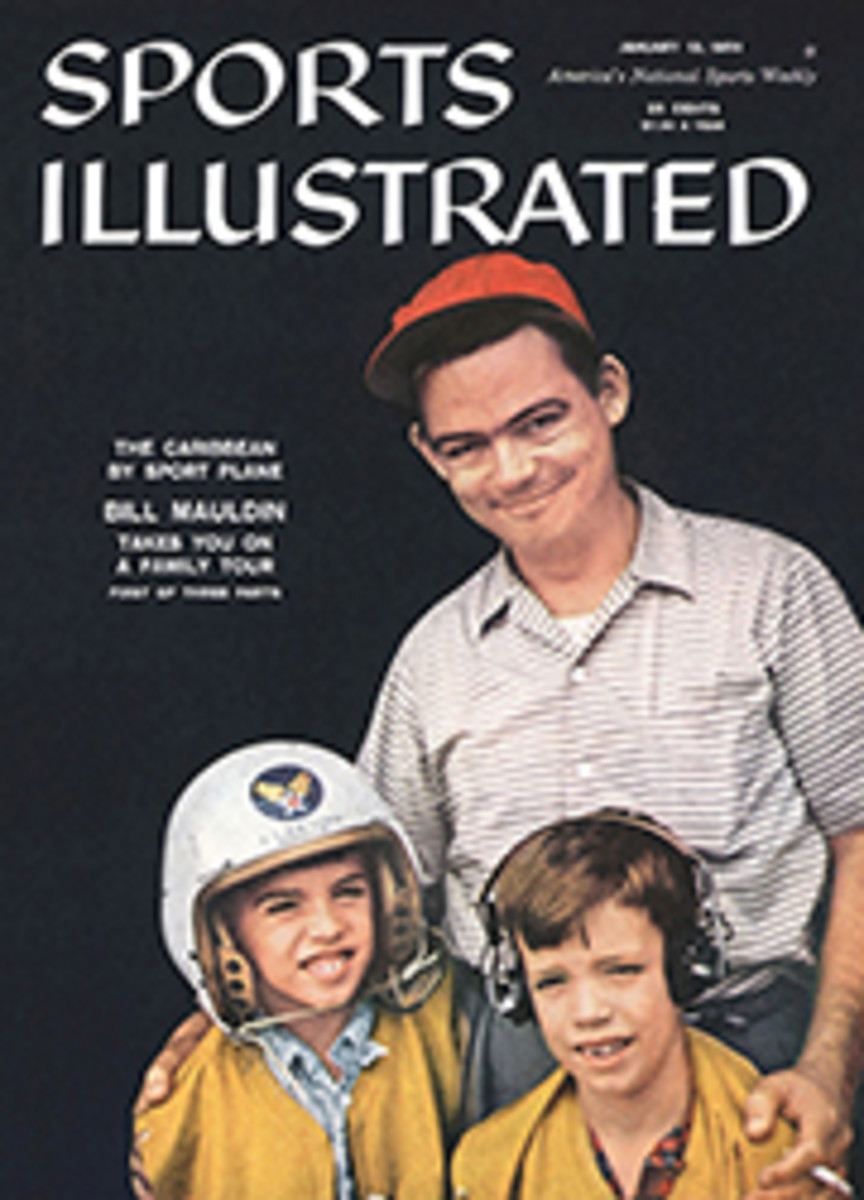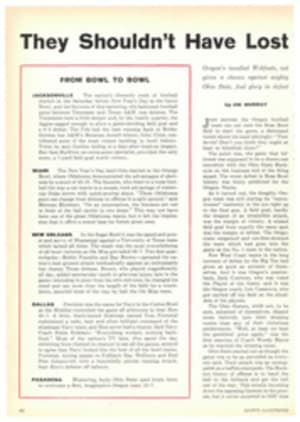
On and Off the Fairways
A ONCE-OVER REVIEW OF THE 1957 SEASON
The two big winners of the 1957 professional season, Dick Mayer and Doug Ford, became so by very different routes indeed. Mayer accounted for most of his $69,512 in prize money by two magnificent winning efforts: the U.S. Open ($7,200) and the Tarn O'Shanter "World" ($50,000). Ford was the circuit's most successful week-to-week participant. His victory in the Los Angeles Open was worth $7,000, the Panama Open $2,000, his Masters victory worth $8,750 and winning the Western Open worth $5,000. In addition, he won $7,900 for three second-place finishes, $1,033 for one third, $5,100 for four fourths and $1,600 for one fifth. He finished in the money in all of the other 25 events he entered to win $55,611, the highest total ever amassed by a non-"World" winner.
The freshman golfer who undoubtedly made the most profound impression on the pro tour last year was Ken Venturi, the former Walker Cup team member who turned pro in November 1956. The assured young San Franciscan, who almost won the Masters as an amateur in 1956, collected over $22,000 before the season's finish though not eligible for prize money in PGA co-sponsored events until May 28. Venturi hit his peak in August. He won the St. Paul and Miller opens on consecutive weekends and over one late summer stretch fashioned 12 straight scores in the 60s: 68, 66, 66, 67, 65, 68, 68, 66, 65, 68, 67, 68.
There were other distinctions: Arnold Palmer, who scored four major victories on the tour to lead in that category, and those two quadrigenarians, Sam Snead and Jimmy Demaret. The ever-green Demaret won three tournaments and came within a shot of first place in the U.S. Open. Snead at 45 was still golf's greatest attraction. The Slammer entered only 12 major events, but won the Dallas Open by 10 strokes and did sufficiently well in the others to add $34,353 to his mountain greenery. Dow Finsterwald, a younger man, won money in every tournament he entered, running to 66 straight the number of events in which he has finished in the money.
Another veteran still around despite longer hitters and sharper wedges, is Old Man Par, as Bob Jones used to call him. For example, a golfer who matched par figures in all the top professional events during 1957 would have won the U.S. Open and the Colonial Invitational, been in the money another 33 times and taken home $32,000 in winnings. Not bad for an oldtimer. O. M. Par still has a few good years left.
SOME DISTINCTIONS EARNED ON THE 1957 TOUR
MOST IMPROVED SHORT GAME: George Bayer, who became conservative around the greens. Much more fastidious wedge play and chipping helped him win the Canadian Open.
MOST IMPROVED OFF THE TEE: Arnold Palmer practiced hard on his tee shot, stopped switching drivers and added accuracy to his already fine length. Art Wall, a fellow Pennsylvanian, became longer and straighter.
MOST IMPROVED PUTTER: Paul Harney learned to keep his head still, cut down on the three-putt greens, won $26,000 last year.
MOST IMPROVED PLAYER: By slowing up his backswing and trying not to hit the ball too hard, Al Balding improved his control and timing, won three events in 1957.
MOST PLACID PLAYER: Julius Boros, although Pat Schwab threatened until hitting 24 balls out of bounds.
MOST CONSERVATIVE PLAYER: Dow Finsterwald, who always hits for the fat part of the green, has finished second 13 times in the last two years.
MOST DARING PLAYER: Al Besselink will go with his driver where the percentage would argue for a safer iron.
MOST TALKATIVE: The most delightful conversationalist is Dutch Harrison, but former college debater Bob Inman is pushing him hard for the top.
MOST DETERMINED: Doug Ford, of whom PGA Champion Lionel Hebert said, "He starts every tournament as if he were flat-broke."
[originallink:10480911:41539]
PHOTO
OPEN WINNER MAYER also captured the "World," wealth and fame in 1957.

